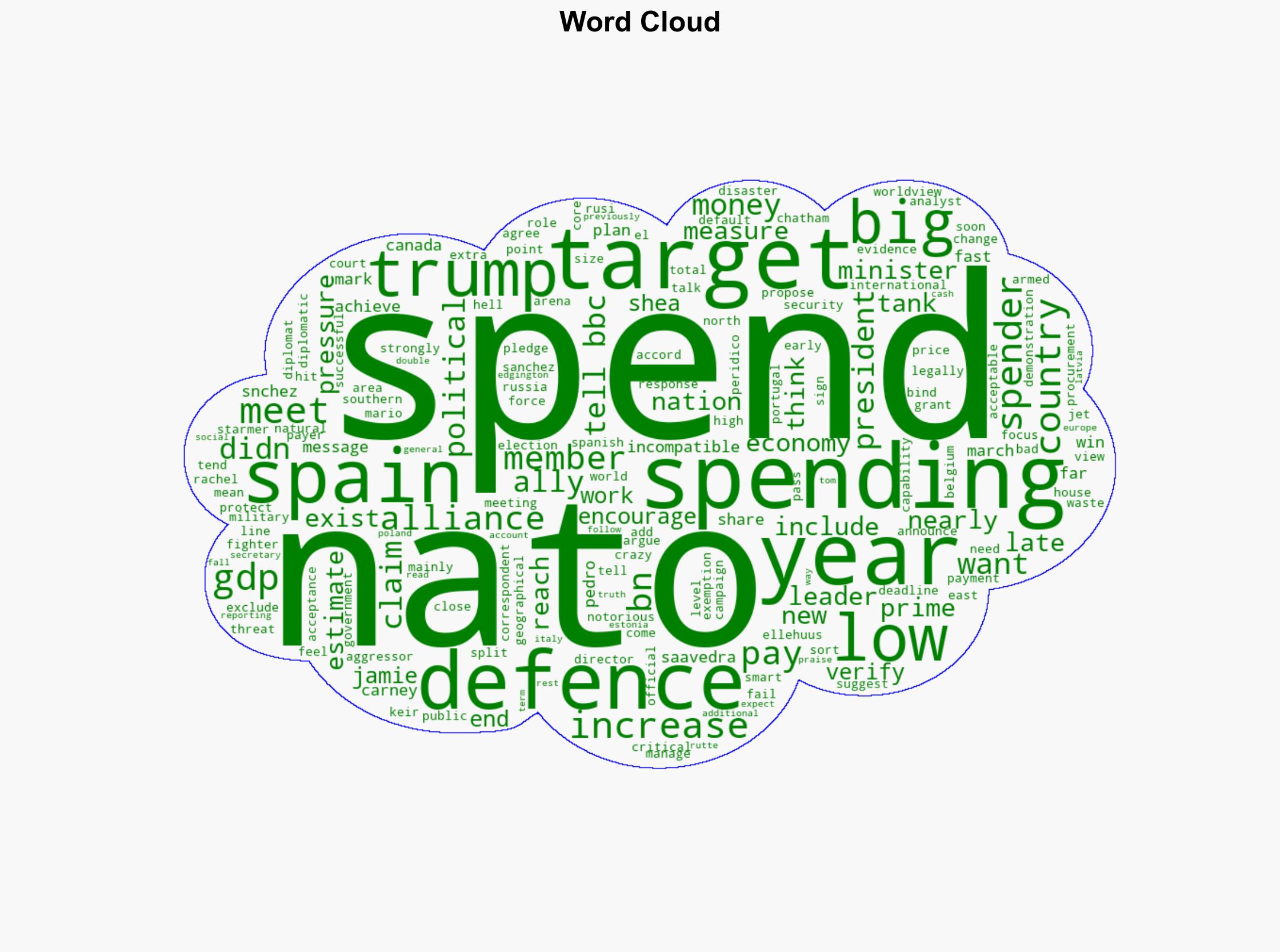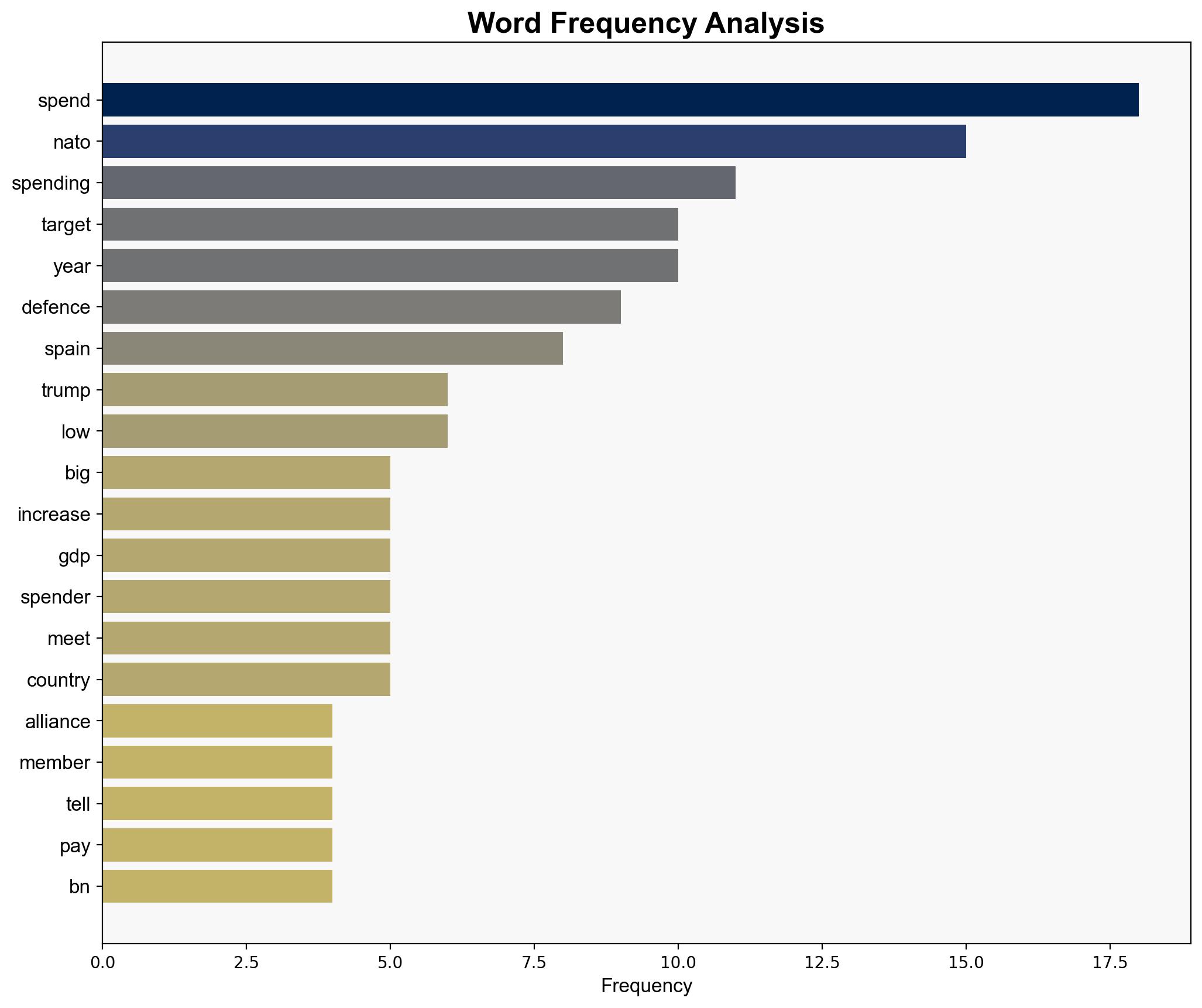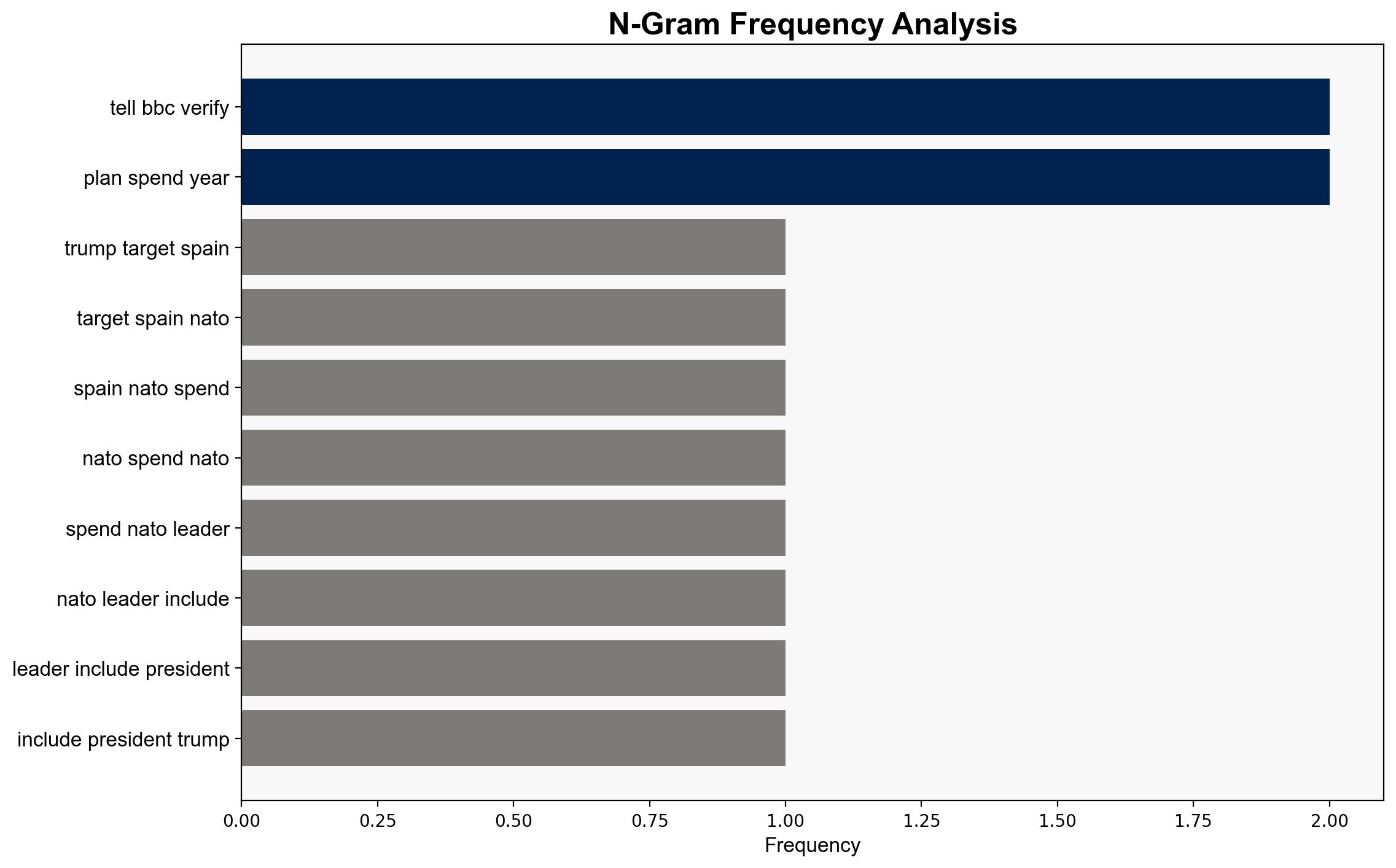The nine Nato countries that missed their defence spending targets – BBC News
Published on: 2025-06-24
Intelligence Report: The nine Nato countries that missed their defence spending targets – BBC News
1. BLUF (Bottom Line Up Front)
Nine NATO countries have not met their defense spending targets, which are measured as a percentage of GDP. This shortfall highlights a strategic vulnerability within the alliance, potentially affecting collective security commitments. Immediate actions are recommended to address these discrepancies and ensure equitable burden-sharing among member states.
2. Detailed Analysis
The following structured analytic techniques have been applied to ensure methodological consistency:
Causal Layered Analysis (CLA)
– Empirical Level: Several NATO countries, including Spain and Canada, have not achieved the agreed defense spending targets.
– Systemic Level: The disparity in spending is influenced by geographical proximity to perceived threats, with northern and eastern members typically spending more.
– Worldview Level: Some nations prioritize non-military roles, such as disaster response, over traditional defense spending.
– Myth Level: The belief that increased spending equates to better security is not universally accepted, leading to political resistance.
Cross-Impact Simulation
– The failure to meet spending targets could strain NATO cohesion, affecting collective defense strategies.
– Economic dependencies and political alliances may shift as countries reassess their defense commitments.
Scenario Generation
– Scenario 1: Increased pressure from leading NATO members results in compliance with spending targets, enhancing alliance unity.
– Scenario 2: Continued non-compliance leads to a fragmented NATO, with some members seeking alternative security arrangements.
– Scenario 3: A compromise is reached, allowing for flexible spending targets based on national priorities and capabilities.
3. Implications and Strategic Risks
The current spending shortfall poses risks to NATO’s collective defense posture, potentially emboldening adversaries. There is a risk of political discord within the alliance, which could be exploited by external actors. The economic burden of increased spending may also impact domestic policies and public opinion.
4. Recommendations and Outlook
- Encourage dialogue among NATO members to address spending disparities and explore alternative contributions to collective security.
- Develop a tiered spending framework that accounts for economic capabilities and strategic priorities.
- Scenario-Based Projections:
- Best Case: All members meet or exceed spending targets, strengthening NATO’s deterrence capabilities.
- Worst Case: Persistent non-compliance leads to a weakened alliance and increased regional instability.
- Most Likely: Incremental progress with some nations gradually increasing their defense budgets.
5. Key Individuals and Entities
– Donald Trump
– Keir Starmer
– Pedro Sánchez
– Mark Carney
– Mark Rutte
– Jamie Shea
– Rachel Ellehuus
– Mario Saavedra
6. Thematic Tags
national security threats, defense spending, NATO, geopolitical strategy, alliance cohesion





